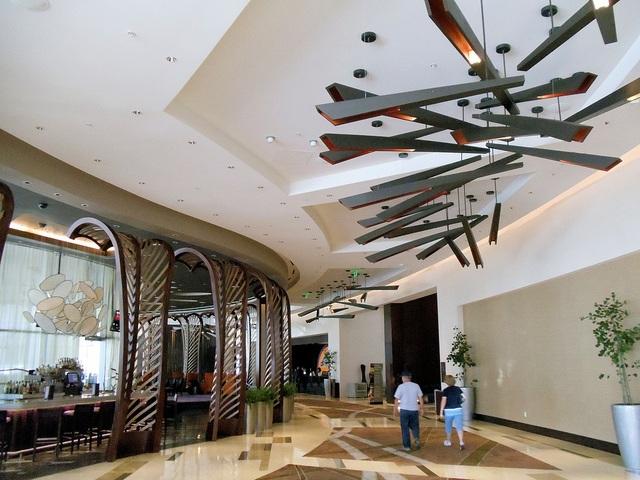
Researchers have long debated whether LEED certification provides a business advantage for hotels and motels, particularly in the U.S. Various studies have been conducted through the years that suggest that eco-certification programs do make a difference, particularly when it comes to customer patronage. Will customers seek out eco-certified accommodations, and can that loyalty be translated into higher revenue for the hotel or motel?
Last year we reported on Cornell University’s study of eco-certification of lodgings as a whole. The study, Hotel Sustainability: Financial Analysis Shines a Cautious Green Light, found that there were benefits to eco-certification, but they varied widely enough to be completely conclusive. The research also focused on results from a particular stream of data, specifically information obtained from Travelocity. In other words, it examined the outcome of eco-certified lodgings when promoted to a specific cost- and quality-conscious customer group.
This year’s report drills down a bit more, by focusing specifically on U.S. hotels that received LEED-certification. The three authors, Matthew C. Walsman, Rohit Verma and Suresh Muthulingam, looked at the revenue earned by LEED-certified hotels versus non-LEED hotels.
What they found was that “certified hotels obtained superior financial performance as compared to their non-certified competitors.”
To obtain their data, the researchers compared 93 LEED certified hotels with 514 non-LEED hotels. Because there is such a wide difference in hotel accommodations in the U.S., they used a three-step approach that allowed them to compare the data from hotels of similar structure, size and environmental parameters in order to isolate the revenue on a “difference-in-difference” comparison.
Since the LEED program rewards projects that are built in suburban or urban areas with supporting transportation systems (i.e., areas with high density that might benefit from eco-conscious commercial projects), the authors note that most of the comparisons were in suburban and urban areas. Interestingly, LEED certification was found more commonly with smaller hotels (75 to 146 rooms) than with larger, leading to the perception that “smallish hotels seem to be best suited for LEED certification,” an observation that vies with a study by CBRE that we reported on earlier this month. That report noted that most commercial properties in general that were either LEED or Energy Star certified were on the whole larger than those of the competitive non-certified set. Apparently, that may not include hotels certified between 2007 and 2012.
This year’s Cornell study, The Impact of LEED Certification on Hotel Performance, found that while the occupancy rate for LEED-certified hotels was slightly under that of non-LEED, the average daily rate (ADR) and the revenue gained per average room (RevPar) were both higher. The ADR tended to be $10 higher than non-LEED, and the RevPar was $20.
“The LEED hotels quickly made up the occupancy deficit recorded in the year prior to certification, and they outperformed competitors for two years following certification.”
The authors did note some limitations in the study, including the relatively new data, since the majority of the buildings were built between 2009 and 2011, when LEED really came into its own in the hospitality sector. This fact had some affect on how the properties were reviewed, e.g., a three-year period that included one year prior to certification and the first two years following. As well, LEED’s “boom” of 2010 appears to have taken a hiatus in 2011 and 2012. It’s not clear whether the drop in construction is on a solid rebound now that cities have been adopting their own green bylaws, many of which include LEED principles.
Lawrence Adams, vice president of the architectural firm ForrestPerkins, notes that while LEED has only been in existence in the U.S. as a certifying criteria since 2000, Europe has operated several similar programs since the 1990 and may have much more solid data on the benefits of architectural certification programs. It would be interesting to find out if the EU’s oldest programs, like the U.K.’s Building Research Establishment Environmental Assessment Method (BREAM) or the equally well known Haute Qualité Environnementale (HQE - English) of France, experienced the same kind of slow-down and if there are changes that the industry made to offset that change.
The Cornell team does note that this study leaves lots of room for expansion, including detailed studies of whether certification itself really makes a difference to the revenue of LEED-designed properties. Would LEED certification actually make a difference with structures that were built to LEED specifications, but which the owners opted not to certify, say because of added cost or time? With more cities adopting LEED concepts in their bylaws, this may be a great question to explore for a future Cornell hospitality study.
LEED Gold certified Hotel Aria, Las Vegas: Cygnusloop99
Jan Lee is a former news editor and award-winning editorial writer whose non-fiction and fiction have been published in the U.S., Canada, Mexico, the U.K. and Australia. Her articles and posts can be found on TriplePundit, JustMeans, and her blog, The Multicultural Jew, as well as other publications. She currently splits her residence between the city of Vancouver, British Columbia and the rural farmlands of Idaho.














